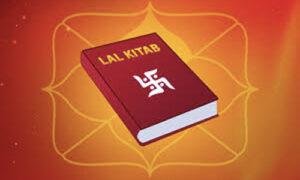
Lal Kitab is unique in field of vedic astrology because for the first time a book explained how certain planetary positions in one's horoscope should also reflect in the lines of his palm. In other word the book is on astro-palmistry, that is, it has mixed the two different arts of Palmistry and Jyotisha a.k.a. Hindu astrology together.
The books were published in red hard-cover. In Hindi and Urdu languages Lal means the color red and Kitab means a book. Further, in India traditionally, business ledger books are bound in red color. Also red color in Hindu religion is considered to be very auspicious and as symbol of Ganesha and Lakshmi. The red kum-kum is essential in all auspicious occasion and Hindu religious rites. The Lal Kitab volumes were also given a red binding because these books contain duniyavi hisaab kitaab ( the ledger book of one’s life). In fact, Lal Kitab mandates in very clear terms, that any book dealing with this system must be bound in non-shining, red color.
For the first time in the history of astrology, Lal Kitab introduced a new style of horoscope analysis with quick and affordable remedies, which were devoid of remedies like pooja and wearing of gemstones, generally recommended by other branches of Vedic astrology and Jyotisha.
In present days, there are many followers of Lal Kitab. In India and abroad one can find many practitioners of Lal Kitab, prescribing remedies as per farmanns of these books. There are many people, who claim to have benefited from the remedies of these books. The mass followers of Lal Kitab are increasing everyday and this science has become very popular in present days throughout different parts of world.
The book has been popular in both India and Pakistan, many of its astrological remedies upaya or farmans have become part of every day culture in the subcontinent, like throwing coins into a river while passing over it, feeding grass to cow, bread to a dog and offering meals to unmarried girls etc.
CONTACT US